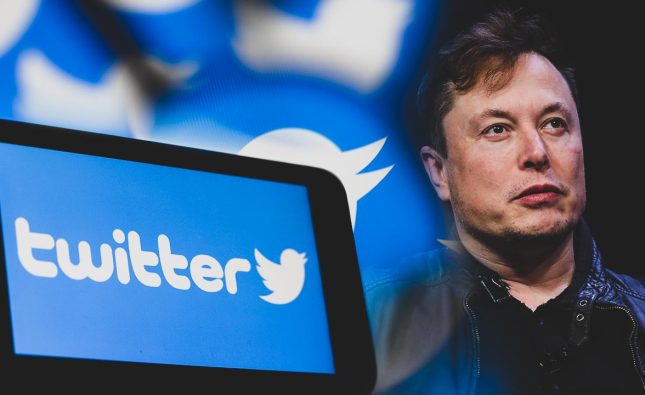
Welcome to the digital age, where we can connect with people from all over the world, buy anything we want online, and even work remotely without ever leaving our homes. It’s hard to imagine a time when these things weren’t possible, but just a few decades ago, the idea of the internet was nothing more than a far-fetched dream. In this blog post, we’ll take you on a journey through time as we explore how the internet has evolved from its humble beginnings into the technological powerhouse that it is today. From dial-up modems to lightning-fast fiber-optic cables, buckle up and get ready for an adventure through history!
Pre-Internet: A World Without Connection
Before the internet, the world was a much different place. People were not as connected as they are today, and information was much harder to come by. The internet has changed all of that, and it has made the world a much better place.
The internet has connected people from all over the globe and given them a platform to share their ideas and thoughts. It has also made it possible for people to access information that was once difficult to find. The internet has truly changed the world for the better.
The Early Internet: A Slow and Scattered Start
The early internet was a far cry from the sleek, user-friendly experience we enjoy today. In its earliest days, the internet was a slow and scattered affair, with only a handful of computers connected to each other via clunky dial-up modems. Even basic tasks like sending an email or loading a webpage could take minutes, if not longer.
But despite its humble beginnings, the early internet laid the groundwork for the global network we know today. In the early 1990s, Tim Berners-Lee invented the World Wide Web, which allowed users to access information on any computer connected to the internet. This breakthrough made the internet more accessible and user-friendly, opening it up to a wider audience.
Since then, the internet has undergone several major changes and advances. The widespread adoption of broadband internet in the 2000s made surfing the web faster and smoother than ever before. And today, mobile devices like smartphones and tablets allow us to access the internet anytime, anywhere.
As we continue to rely on the internet for an ever-growing number of tasks, it’s hard to imagine life without it. It’s safe to say that the early pioneers who helped build the internet laid the foundations for one of humanity’s most important tools.
The Modern Internet: A Global powerhouse
The internet as we know it today is a far cry from its humble beginnings. What started as a small network of computers in the early 1970s has grown into a global powerhouse that touches almost every aspect of our lives. In this section, we’ll take a look at some of the key developments that have made the modern internet what it is today.
One of the earliest advances was the development of packet switching, which allowed information to be broken down into small packets that could be routed through the network more efficiently. This laid the foundation for the development of TCP/IP, the protocol that underlies all internet communication today.
The next major milestone was the creation of ARPANET, the first true Wide Area Network (WAN). This allowed computers to be connected together over long distances, opening up new possibilities for collaboration and information sharing.
The 1980s saw further advances in networking technology, with the advent of Ethernet and fiber optics making data transmission faster and more reliable than ever before. The 1990s brought us the World Wide Web, which made it possible to access information from anywhere in the world with just a few clicks.
Today, the internet continues to evolve at an incredible pace. New technologies like high-speed broadband and mobile data are making it easier than ever to stay connected, while services like cloud computing are revolutionizing how we store and access information. It’s safe to say that the internet has truly changed the world – and there’s no telling
How the Internet Changed the World
The way we interact with the world has changed dramatically since the internet was first introduced in the early 1970s. In just a few decades, it’s become an integral part of our lives, transforming how we communicate, work, and even shop. Let’s take a look at how the internet has changed the world and the key technological advancements that made it possible.
The first thing to consider is how the internet has changed communication. Before the internet, we were limited to communicating with people in our immediate vicinity or through snail mail. But now, thanks to email, instant messaging, video conferencing, and social media, we can communicate with anyone in the world instantly. This has had a profound effect on both our personal and professional lives. We can stay in touch with family and friends who live far away, and collaborate with colleagues from all over the globe.
The internet has also transformed how we do business. It’s made it possible for companies to operate remotely and for employees to work from home. Online shopping has taken off in a big way too—it’s now possible to buy almost anything you need without ever leaving your house. And thanks to online banking and bill pay, managing your finances is easier than ever before.
Finally, the internet has had a huge impact on education. It’s now possible to get a degree entirely online or take individual courses from anywhere in the world. And if you want to learn
The Future of the Internet
The internet has revolutionized the way we communicate, connect, and collaborate. It’s hard to imagine a world without the internet, but it wasn’t that long ago that the majority of people didn’t even know what the internet was. Today, the internet is an essential part of our lives and its future is only getting brighter.
The internet has come a long way since its humble beginnings as a military communication network in the 1960s. In the decades since then, it has undergone numerous changes and improvements that have made it into the global phenomenon it is today.
One of the biggest changes to the internet in recent years has been the rise of social media. Sites like Facebook, Twitter, and Instagram have completely changed the way we interact with each other and share information. These platforms have also given rise to new forms of communication like live streaming and instant messaging.
Another big change to the internet has been the proliferation of mobile devices. More and more people are accessing the internet from their smartphones and tablets instead of traditional desktop computers. This shift has led to a whole new wave of mobile-friendly websites and apps designed specifically for smaller screens.
What does all this mean for the future of the internet? Well, we can expect even more changes and innovations in the years to come. We’ll see faster speeds, more reliable connections, and new ways to use data that we can’t even imagine today. The future of the internet is looking bright indeed!










